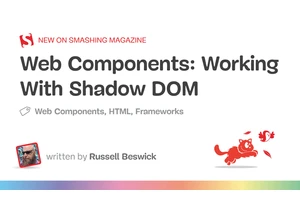HTML attributes are like little instructions that we add to the markup of elements to make them do certain things or behave in certain ways. For example, most of us know that the target attribute with a value of _blank opens the link in a new tab or window. But did you know that you can use it on the form element, too? John Rhea presents several lesser-known uses for common HTML attributes.
https://smashingmagazine.com/2025/01/lesser-known-uses-better-known-attributes/
Connectez-vous pour ajouter un commentaire
Autres messages de ce groupe

Prompting isn’t just about writing better instructions, but about designing better thinking. Ilia Kanazin and Marina Chernyshova explore how advanced prompting can empower different product & design u

Internationalization isn’t just translation. It’s about formatting dates, pluralizing words, sorting names, and more, all according to specific locales. Instead of relying on heavy third-party librari

Design systems are more than style guides: they’re made up of workflows, tokens, components, and documentation — all the stuff teams rely on to build consistent products. As projects grow, keepi

Talking points. Smart questions. A compelling story. This guide helps you prepare for your UX job interview. And remember: no act of kindness, however small, is ever wasted. https://smashingmagazine.c

Do you need a little inspiration boost? Well, then our new batch of desktop wallpapers might be for you. The wallpapers are designed with love by the community for the community and can be downloaded

The Core Model is a practical methodology that flips traditional digital development on its head. Instead of starting with solutions or structure, we begin with a hypothesis about what users need and

Web Components are more than just Custom Elements. Shadow DOM, HTML Templates, and Custom Elements each play a role. In this article, Russell Beswick demonstrates how Shadow DOM fits into the broader
